Drowning prevention: are the safety devices effective?
Drowning prevention: effective or very little safety features
Drowning is the second most common cause of accidental death among children in France since 1990. Most drownings occur in swimming pools and are preventable. But can drowning prevention be based solely on technical safety devices? Answer.
Drowning prevention: two types of existing devices
There are two types of drowning prevention devices that could help prevent drowning:
– the first one is to keep a person afloat in the water
– the second is to sound the alarm when a person falls into the water
However, no device can guarantee that drowning will never occur.
1. The life jacket
A lifejacket is probably the best protective device to use to prevent accidental drowning. But how many people do you see wearing them at the beach or in the pools? And even with a life jacket, a person could get stuck on their stomach in the water and drown.
2. Alarms to prevent drowning: the example of the pool and the cell phone
Pool alarms can be very effective as an alert sounds when motion is detected in the water. Drownings take only a few seconds. Pool alarms take at least 20 seconds to go off. Pool owners ignore them or turn them off. Unconsciousness can occur within 2 minutes and brain damage within 5 minutes, so time is of the essence.
On the other hand, wrist alarms connected to the cell phone ring when the wearer enters the water. These devices will not work unless they are worn and children (who are usually the ones who need them) have been known to remove them.
And you, would you place all your trust in these devices?
Knowing how to swim is undoubtedly the best way to prevent drowning
. It is essential to ensure that everyone in your family learns to swim, and that you have done everything possible to eliminate the risk of a drowning death. But this is still not a guarantee.
A person who knows how to swim may pass out in the water, get a drink, be too tired to get to shore, or have a heart attack in the pool.
And because unusual circumstances can quickly overwhelm everyone, from young children to experienced adult swimmers, it is important for everyone to always follow safety rules.
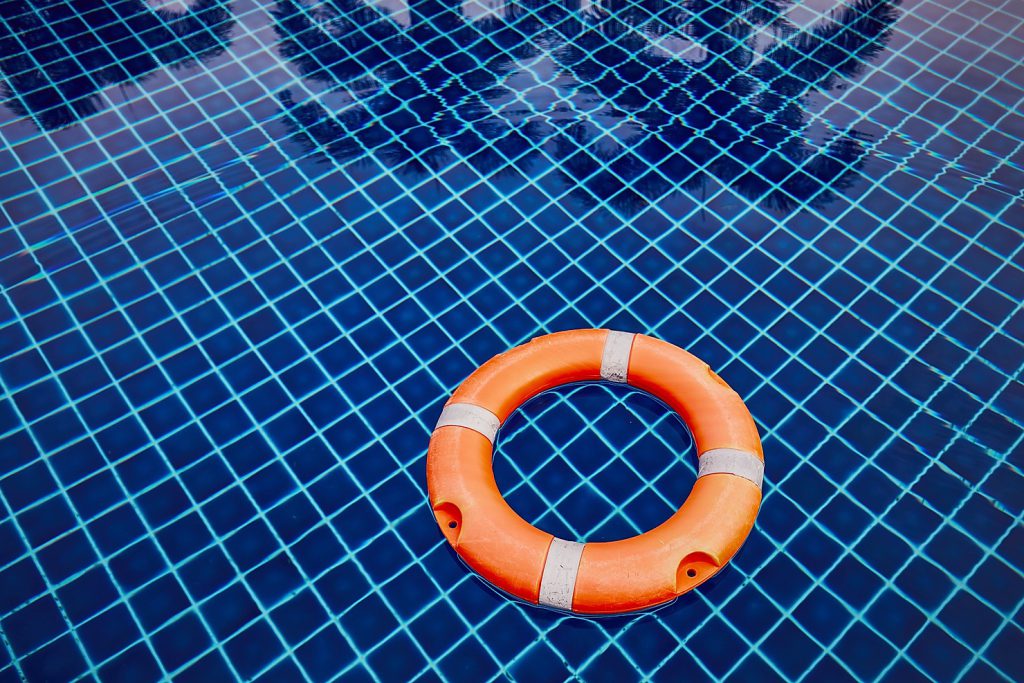
Drowning prevention: safety devices are less effective than learning to swim
https://blog.swimstars.fr/prevention-risques-contre-accidents-noyades/
World Water Safety Day: a first in France!
World Water Safety Day in France!
For World Water Safety Day, our priority is to raise awareness about the risk of drowning. Indeed, the importance of training in the aquatic environment is paramount for safety, especially among the youngest.
Because learning to swim is essential
In France, drowning is the second leading cause of death for children under the age of 4 years. Yet, Knowing how to save yourself and how to swim safely can be learned from a young age and throughout the year. So our duty is to concentrate all our efforts on the public where the risks are the highest. Thus, the best time for this type of awareness is the day before the summer school vacations. Because it is often synonymous with travel and swimming.
Our World Day is about all aquatic environments such as swimming pools, the sea, rivers and lakes. Because danger can be everywhere! It could be the absence of a safety fence around the pool; unfavorable weather conditions for swimming in the sea; or dangerous currents in the river.
To keep everyone safe in the water
The Pat’Patrouille, the big stars of this first edition
So in 2019, Swim Stars, SwimWays and the Pat’ Patrol have pooled their expertise in the service of water safety by offering a day of education and awareness of best practices. Thus, the 1st World Water Safety Day in France was born.

The Pat’ Patrouille adventurers on a mission for water safety! @laviedetatacarine @lalottes
This prevention day took place in all the pools of the Swim Stars network. The Pat’ Patrouille rescue puppies made a surprise arrival at the 4* Oceania hotel-spa in Paris-Porte de Versailles, one of the network’s swimming pools. The goal is to make this moment even more fun and magical for the students and to convey their good water safety tips.
Swim, float, swim, get out of the water
Children were able to take advantage of the hotel’s heated pool for their AUTO-RESCUE® swimming lessons (from age 3) and Apprentissage® swimming lessons (from age 5), given all year round by Swim Stars.
Thus, these sessions were an opportunity to remind the importance of learning swimming and survival reflexes from a very young age. Because it is fundamental to reduce the risk of drowning, which is particularly high in the summer.
The S.A.F.E. Water Safety Prevention Program with our mascot Poulpy!
Under the watchful eye of the Pat’ Patrol, the students were introduced to the
water safety prevention program S.A.F.E.
(Safety, Learning, Training, Environment) program to make them aware of the risks associated with water. And this is Poulpy! Our favorite mascot who teaches us to be safe!

World Water Safety Day: Educational leaders and Poulpy presented the SAFE drowning prevention program to children
Distributed free of charge to schools and children’s associations
It aims to educate families in the right active and passive safety actions. Like not swimming without an adult; knowing how to call for help; assessing the dangers in the environment; learning survival reflexes in case of a fall in the water…
Learn more about the S.A.F.E. prevention program developed by Swim Stars
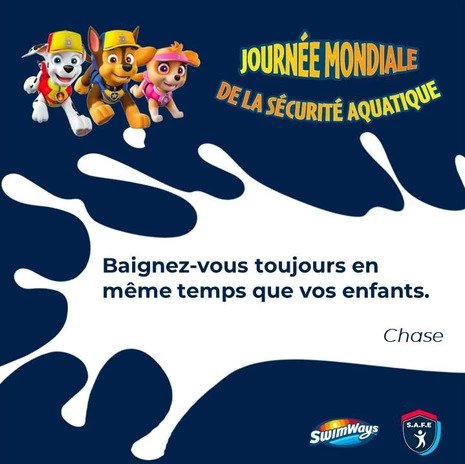
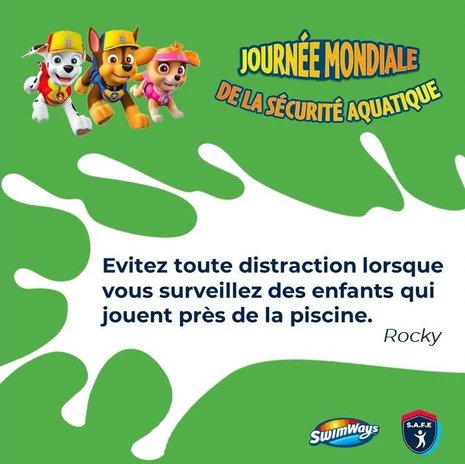
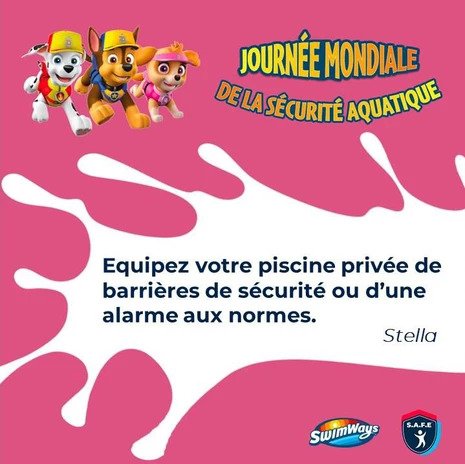
World Safety Day: find all the safety tips to download
here
SwimWays and Swim Stars will continue to work daily to promote water safety and develop survival skills to make water a great experience for everyone!

World Water Safety Day to raise awareness of the importance of learning to swim and teach water survival skills
First World Water Safety Day in the United States in 2012
In 2012,
USA Swimming Foundation
and
SwimWays
(our event partner) launched “Learn to swim day” in the United States for children and parents. Indeed, the mission is to educate children and parents about water safety and the importance of learning to swim.
Learn more about water safety
here
*Healthy Public France Figures 2018
Drowning: preventing swimming risks with S.A.F.E.
Drowning: how to be S.A.F.E.?
To prevent swimming hazards, the Swim Stars S.A.F.E. program informs you of simple actions you can take to save lives by avoiding drowning.
In English, the word “SAFE” means to be safe or out of danger. Each letter corresponds to a French word and announces the themes. Indeed, it is the acronym for Safety, Learning, Training and Environment. These 4 themes are the subject of a playful presentation in schools with the mascot Poulpy! It’s a little octopus that schoolchildren must keep safe through the adventures of the cephalopod.
Avoid drowning with our 8 tips to be S.A.F.E
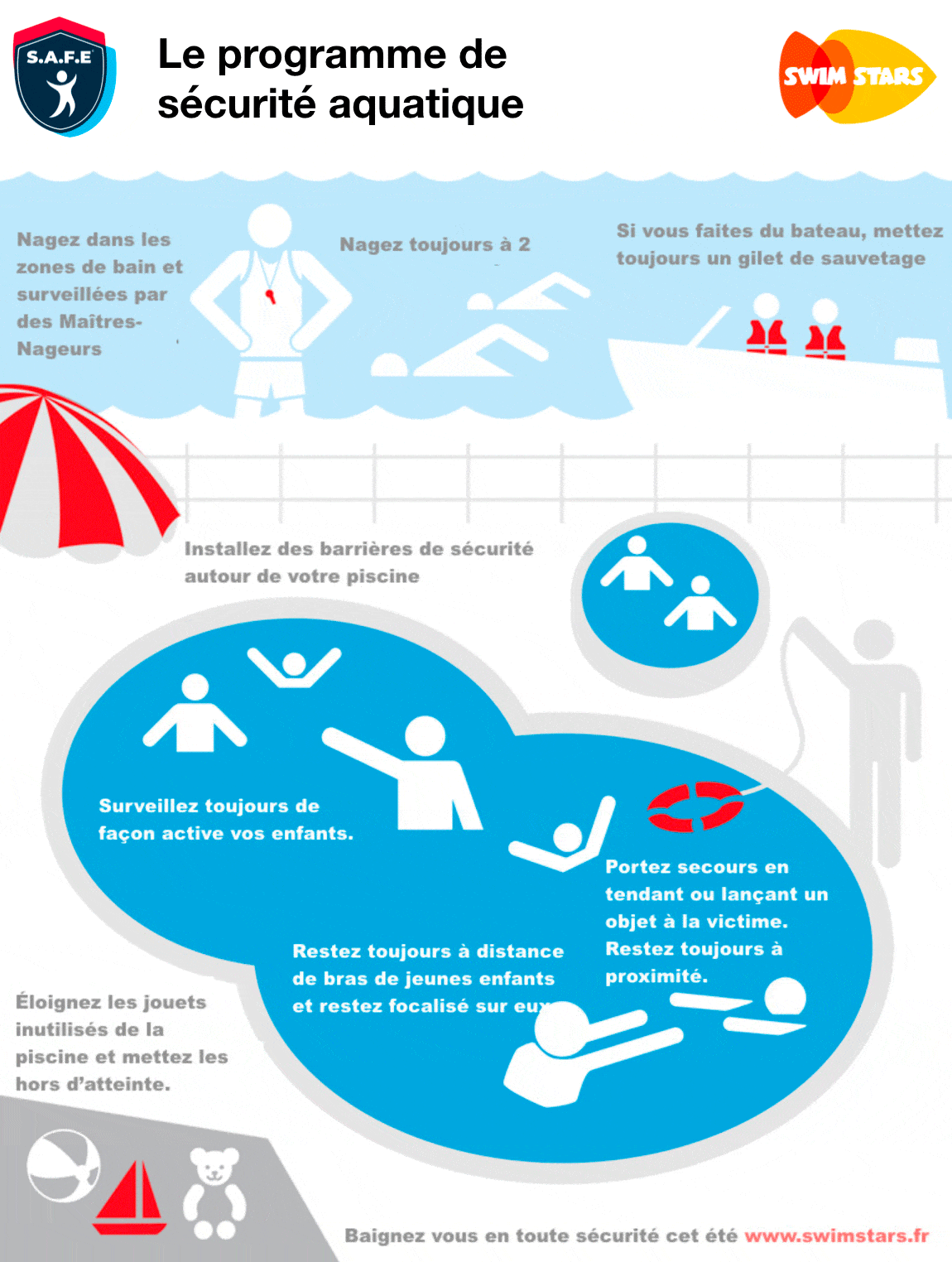
8 anti-drowning tips by S.A.F.E
Drownings: prevention rather than cure!
First of all, it is necessary to make sure of its level of practice. How do I evaluate my swimming level?
Once you are aware of your relationship with water, you can evolve serenely.
So, learning to swim with a lifeguard at a young age will give you all the tools you need to prevent drowning as an adult.
earing to swim with a lifeguard at an early age will give you all the tools you need to prevent drowning as an adult.
When a child is swimming, it is imperative that a trusted adult be in the water at the same time and nearby to supervise the child. Because when the adult is watching out of the water, vigilance can decrease because of many temptations. In fact, consulting the cell phone or taking a nap are the first two causes of a slackening.
The child is moving and may not be in your field of vision. This is where the danger begins.
Prevent swimming accidents such as trauma
For children, as well as adults, always check the depth of the swimming area (pool, lake, river, and sea) before jumping into the water. Indeed, a bad reception can lead to a shock that can endanger your back (compression of the dorsal discs, risk of paralysis) and cause a suspicion of spinal trauma (cervical level).

Drowning: intervention on a suspicion of trauma following a dangerous dive in a swimming area with little depth
Drowning by hydrocution: what simple reflexes should you adopt to preserve your health?
Before each swim, you should enter the water gradually.
Why? Wetting the back of the neck is an essential gesture to prevent the risk of hydrocution. In fact, during hot weather, a thermal shock between the outside temperature, the water temperature and your body temperature can cause a cardiac arrest.
Eating a large meal, drinking alcohol or cold drinks before or during swimming are aggravating risk factors. The risk of discomfort will be increased if the water is cold or after long exposure to the sun. In case of shivering, it is strongly advised not to swim in order to avoid any risk of distress in the water. Otherwise, if you decide to go swimming as a responsible adult, always tell someone close to you first.
Drowning: why choose supervised swimming areas?
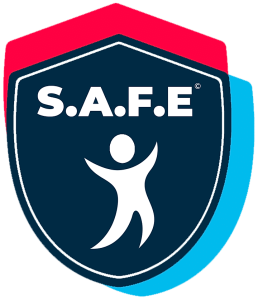
Drowning: S.A.F.E. logo for drowning prevention program
Because in the event of a swimming accident, first aid professionals are already on site to provide rapid care.
Find out if the swimming areas are supervised. Very often signs indicate whether the bathing area is supervised or not. If necessary, contact the town hall on which the beach in question is located.
In France, it is forbidden to swim in certain rivers. It is often forbidden to swim there because of the strong currents, as in the Loire for example, and the high pollution. Swimming is rarely supervised in rivers.
- Choose supervised areas for swimming
- Be aware of children even in supervised areas
- Find out about swimming conditions: currents, natural hazards, etc.
- Always follow the safety instructions indicated by the swimming flags and/or the lifeguards.
- If necessary, go to the first aid station to obtain additional information.
Drowning: how to react in case of difficulties in the ocean?
The S.A.F.E. program provides advice on how to react in case of difficulties at sea.
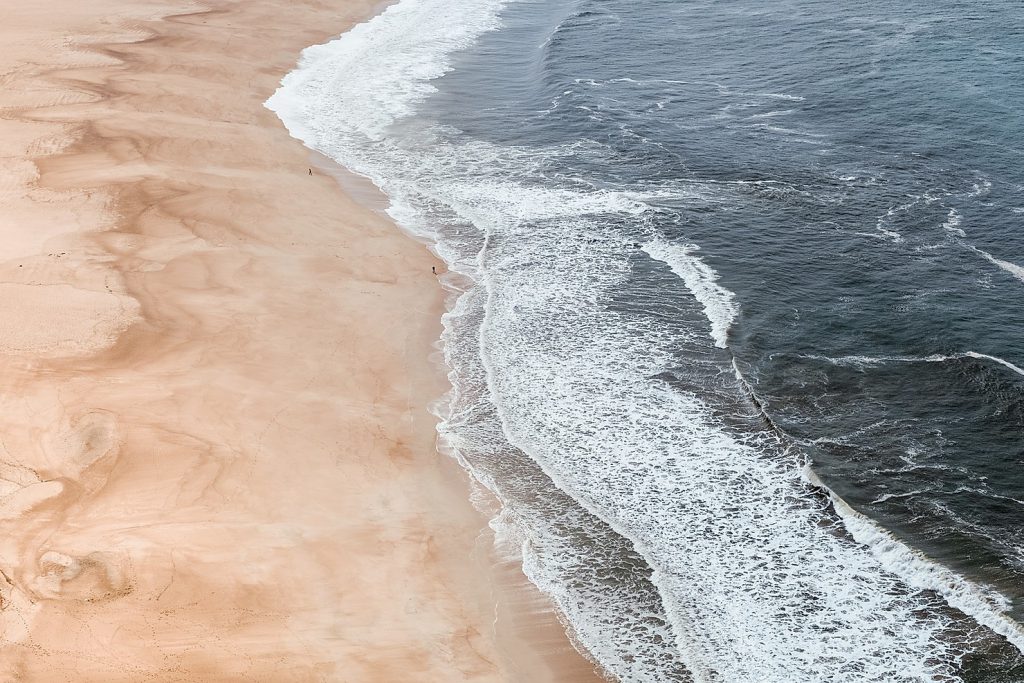
Drownings: Avoiding difficulties at the ocean
Drowning: 5 tips for the right reaction
- Do not panic
- Do not try to fight against the current, the waves and the rollers, so as not to exhaust yourself. Indeed, it is better to let yourself be guided to keep your strength
- Let yourself be carried by the current and use your arms to call for help
- Do the plank in case of fatigue. This allows you to breathe normally
- Try to stay calm until help arrives.
And if one day you witnessed a drowning: what to do?
S.A.F.E. gives you its advice on how to react if you witness a drowning.
Witnessing drownings: our 3 tips
- Notify the lifeguards immediately if the area is supervised. Then call for help by dialing 15 or 112 if it is an unattended area
- Do not take your eyes off the victim in order to guide the rescue team
- Do not intervene directly unless the witness feels able to help without risking his or her own life. Caution: This implies a very good physical condition and very good swimming skills (you must be able to pull the victim in the water). In fact, it is common for people who have tried to help to end up drowning themselves.
Therefore, do not feel guilty if you have not dived yourself. It is by preventing and alerting that you will save the life of the person in distress.
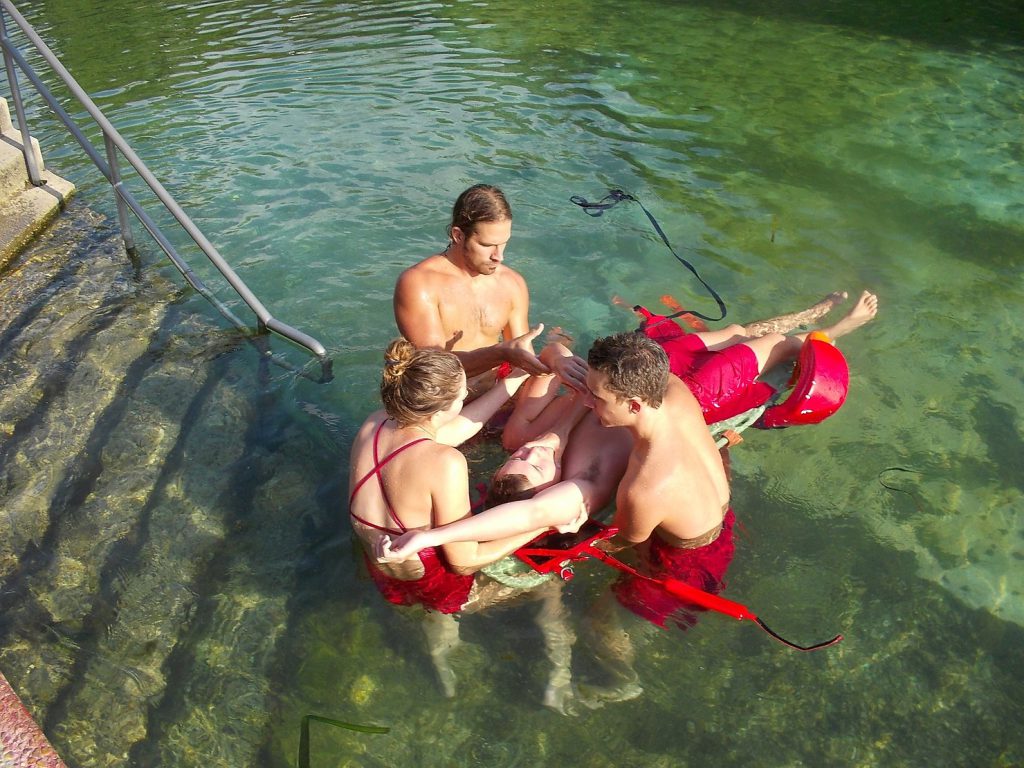
Drowning: victim rescued during a response exercise.
https://blog.swimstars.fr/securite-aquatique-programme-safe/
https://blog.swimstars.fr/journee-mondiale-securite-aquatique/
Anti-drowning prevention, the S.A.F.E program available to schools
Drowning Prevention: S.A.F.E. Water Safety Program Available to Schools
We work to ensure that all children are safe in the water. As such, we have created a FREE prevention program that aims to reduce the number of drownings and raise awareness in schools. How do you do it? With water safety tips.
Drowning prevention: why water safety is essential
“Water safety is about learning good practices and survival reflexes” explains Olivier, founder of the Swim Stars swimming school
So when your kids are preschoolers, chances are they’ve had a visit from a firefighter to learn about fire safety, right? To ensure that your children are exposed to the same type ofwater safety education, Swim Stars has developed a FREE education program that focuses on tips for staying safe in and around the water.
Indeed, this program named S.A.F.E. for Safety, Learning, Training, Environment is intended for children aged 3 to 7 years.
” We want to deploy S.A.F.E. to make water safety a priority,” explains Olivier Chazot, founder of Swim Stars. ” Because we think it’s a good way to make as many children and parents as possible aware of the risks of drowning and the simple solutions to avoid them. ”
I am S.A.F.E. and therefore I am safe!
Our instructors teach children the importance of safety in and around the water. Indeed, danger can come from anywhere.
Our coaches also use these same techniques to teach lifesaving and safe swimming skills during weekly swim lessons at the Swim Stars network pools.
Because water is everywhere: at the pool, at the beach, near a river – and even at home while bathing. ” It’s a problem that all children will have to face in their lifetime, whether they go to the lake or the pool with their parents,” says Olivier. ” Everyone has to deal with water at some point. This is especially true for young people, where the risks are high. ”
Anti-drowning prevention: 4 main areas of active and passive water safety
Organized in a playful and educational way, the S.A.F.E. presentation features its mascot POULPY :

Drowning: Poulpy presented the SAFE drowning prevention program to children – auto-rescue
Security
Know the rules
Learning
Learn life-saving techniques
Training
Knowing how to call for help
Environment
Understanding nature
The S.A.F.E. booklet and other surprises are given to the students to initiate the dialogue at home.
But I can already take advantage of it to discover
the 7 tips to avoid drowning
with the blog le bassins des tout-petits !
Ask us to come and present S.A.F.E.!
- S.A.F.E., the water safety prevention program
- For students 3 to 7 years old
- Duration: 20 minutes
- Cost: free
Contact Swim Stars to arrange a presentation:
hello@swimstars.fr or 09 86 87 89 29
I book a swimming lesson!
Find out more about Swim Stars, the 1st network for learning to swim
-es-swimstars.pf20.wpserveur.netm
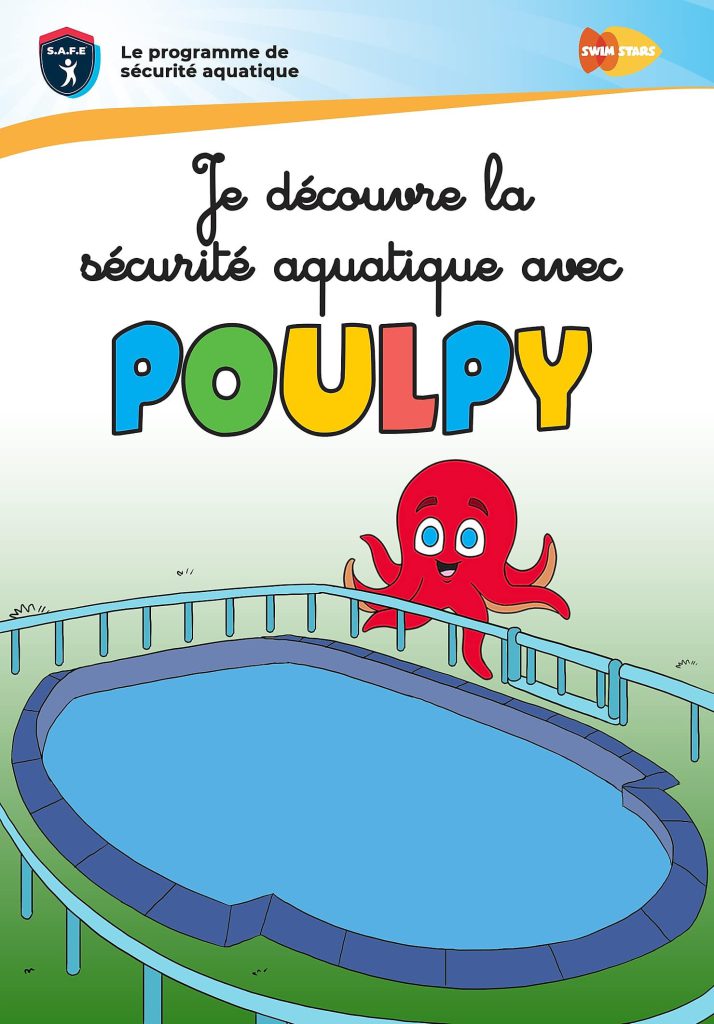
Poulpy’s Drowning Prevention: Learn about water safety with games and coloring pages!
To find out more about the solutions and behaviours to adopt to reduce the number of drownings and swimming-related accidents:
https://blog.swimstars.fr/prevention-risques-contre-accidents-noyades/














